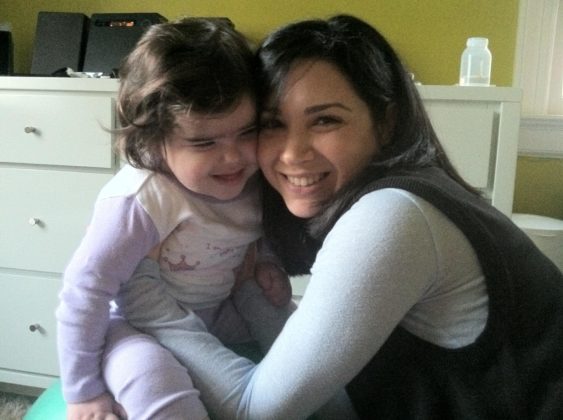I never imagined that western medicine might not have the answers.
“Dr. N. is also on the phone,” the genetic counselor says.
I balance my cell between my cheek and shoulder, kiss my daughter, Joy, on the forehead and adjust her wheelchair’s straps. I nod to the nurse our school district provides to manage Joy’s medical needs at school and weave my way through the maze of walkers and adaptive seating chairs in the classroom until I reach the hallway. Her teacher starts singing their hello song and I listen for any child’s voice amongst the teacher and aides, straining to hear if any of the 3-, 4- and 5-year-olds have learned to talk. Not yet.
Doctor N. starts as I take a seat inside an empty conference room and dig around in my bag for a pen and paper. The sun shines behind the shades and I notice the light switch that I forgot to turn on. “Less than a year ago, a researcher published a paper on a gene whose mutations can cause birth defects like, too small eyes, underdeveloped lungs, and ill-positioned intestines. The lab that we asked to re-analyze a large number of Joy’s genes found this mutation.”
“O–kay.” I drop the pen on the floor and scramble to retrieve it. My brain flashes back to the countless disappointing conversations I’ve had with doctors over the last five years that started with, “Joy’s labs were normal.” Finally, an abnormal test result.
“This mutation explains Joy’s tiny eyes—which led to her cloudy corneas and dimmed vision speckled with blind spots. It’s also probably why her intestines were flipped around inside her abdomen,” Dr. N says. “I think we’ve found your answer.”
I stop my brain from inventorying Joy’s other ailments, those Dr. N. has not mentioned, and bask in the words, “we’ve found your answer.”
Joy endured three surgeries before she was six months old and has undergone countless procedures since. My husband and I waited for dozens of missed developmental milestones and stood by—helpless—when she regressed. Joy suffers pain that gnaws through her gut, nosedives in her blood sugar and involuntary muscles spasms that freeze her limbs into distorted postures. “Keep up the good work,” doctors have said—meaning mine and my husband’s efforts to care for Joy—without any explanation for her maladies. I always felt that each normal test result stunted her doctors’ creativity and boxed in their thinking. Don’t give up on her I wanted to scream. Instead, I’d smile and ask when we should come back for our next appointment.
On the phone, Dr. N. continues: “Only a handful of children in the world have been identified with mutations on this gene.” I ignore the slight shift downward in her voice. Perhaps another family has found a useful medication, therapy, or management plan.
Growing up, I likened physicians to superheroes. In my head, a doctor swoops onto the scene, imaginary cape fluttering behind her. The super doc identifies the cause of the patient’s suffering (“You have X!”) and then, tada! prescribes the cure. The patient mends. I never imagined that western medicine might not have the answers. It never occurred to me that doctors are just people, working with incomplete knowledge of the human body.
“Most of the other children—who had different mutations on this gene—have passed away. They were born with birth defects that Joy doesn’t have,” the genetic counselor says. “Joy’s mutation, at this point, is novel—meaning she’s the only one.”
I know it also means no prognosis, no experimental treatments being devised, and no research funding. “Does this mutation explain her other, more pressing problems?”
“I can’t say,” Dr. N. answers.
“Can we do anything else to help her based on this finding?”
“We have to wait for more children to be identified. This will take time.”
My jaw clenches. What if Joy doesn’t have time? She needs her superhero now. I thank Dr. N. and the counselor and say goodbye. I make a note to find researchers who are interested in this gene—which science does not yet fully understand, but that may play a role in many systems throughout the body. Perhaps a researcher somewhere has been waiting for Joy.
I gather my belongings, walk to Joy’s classroom, and peek through the window of her door. Joy giggles as the teacher sings “Five Little Monkeys.” The sun shines through her dark curls and glows against her fair skin. Her arms flail and she shakes her head from side to side as if trying to sharpen the scene in front of her.
I envision a cape—fastened around her slim shoulders and draped over the back of her wheelchair—waving behind her.
Photo courtesy of the author
Emily Klein is a writer living in New Jersey. Her work has appeared in Parents, Brain, Child, Literary Mama, The Healing Muse and the anthology Monday Coffee and Other Stories of Mothering Children with Special Needs. She has also published four nonfiction books with Scholastic.
Other Links:

